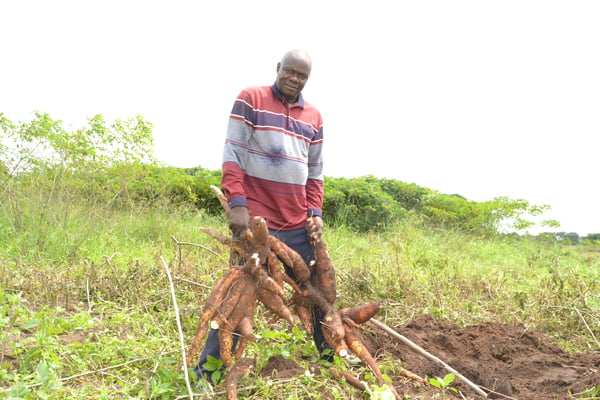Empower farmers through ICT access

What you need to know:
- As of recent statistics, more than 43 percent of the African population has access to smartphones and the internet, facilitating the utilisation of these advancements.
The rise of technology, particularly Information and Communication Technology (ICT), has revolutionised many aspects of life and work globally. Innovations such as Generative AI, robotics, and other advanced technologies have provided new avenues for increasing productivity and efficiency.
In Africa, the adoption of these technologies has been significant. As of recent statistics, more than 43 percent of the African population has access to smartphones and the internet, facilitating the utilisation of these advancements. Uganda, in particular, has seen a notable increase in ICT adoption, with the number of mobile cellular subscribers exceeding 30 million individuals (World Bank, 2023).
The integration of technology in Uganda spans multiple sectors. In the transport sector, ride-hailing platforms such as SafeBoda and Uber have revolutionised transportation by linking drivers with passengers efficiently. E-commerce platforms like Jumia have enabled businesses to reach a broader market, allowing them to sell products online effectively. In healthcare, services like Rocket Health have extended healthcare access through telemedicine, providing medical consultations and services online.
The agricultural sector, a crucial part of Uganda’s economy, has also seen the proliferation of ICT platforms. Applications like Ensibuuko and AgriConnect offer online marketplaces, credit facilities, and agricultural extension services to farmers, particularly in rural areas. These technologies hold the potential to significantly enhance productivity, increase market access, and improve the overall livelihoods of farmers. For instance, drones can be used for precision farming, enabling farmers to monitor crop health, optimise irrigation, and apply fertilisers more efficiently. Mobile applications can provide real-time weather updates and pest control information, helping farmers make informed decisions.
However, the utilisation of these technologies in agriculture remains limited due to the digital divide. The digital divide refers to the gap between those who have access to digital technologies and the internet and those who do not. In Uganda, this divide is stark, with a significant disparity between urban and rural areas.
According to the International Telecommunications Union (ITU), over 80 percent of the rural population lives with almost no access to basic telecommunication services and consistent electrical power. This gap limits the ability of rural farmers to utilise digital tools that could enhance their agricultural practices.
Several factors contribute to the low adoption of technology in Uganda’s agricultural sector. Limited access to the internet in rural areas prevents farmers from utilising online platforms and applications designed to aid agricultural activities. The absence of adequate telecommunication infrastructure, such as mobile network masts, in rural areas exacerbates the connectivity issue. Currently, only 65 percent of Uganda has mobile network coverage, with the majority of this coverage concentrated in urban areas (European Investment Bank, 2024). A large portion of the rural population lacks the skills necessary to use digital technologies effectively. Moreover, the high cost of internet services and digital devices remains a major hurdle. The average cost of 1GB of mobile data in Uganda is approximately $1.32, unaffordable for many rural households where the average income of a Ugandan farmer is $2.18/day (London School of Economics, 2011).
To maximise the benefits of technology in agriculture, it is essential to address these barriers. Expanding internet coverage to rural areas by investing in infrastructure such as telecommunication masts can help bridge the connectivity gap. Public-private partnerships can facilitate this expansion and reduce costs.
Implementing digital literacy training programmes for farmers can equip them with the skills needed to utilise technological tools effectively. These programmes could be integrated into existing agricultural extension services. Policies to lower the cost of internet services and digital devices can make technology more accessible to rural farmers. Raising awareness about the benefits of ICT in agriculture can encourage more farmers to adopt these technologies.
Unless the digital divide is addressed and ICT is made accessible to all regions of the country, the impact of these technologies will remain too limited to significantly influence the growth and development of the Ugandan economy. The Ugandan government must, therefore undertake measures to harness the power of ICT in the agricultural sector. By improving internet access, enhancing digital literacy, reducing costs, and promoting ICT awareness, the digital divide can be bridged.
This will enable farmers to adopt new technologies, leading to increased productivity and improved livelihoods. Embracing these measures will ensure that Uganda’s agricultural sector can fully benefit from the technological revolution.
John Robert Tenywa, Researcher, London School of Economics [email protected]




